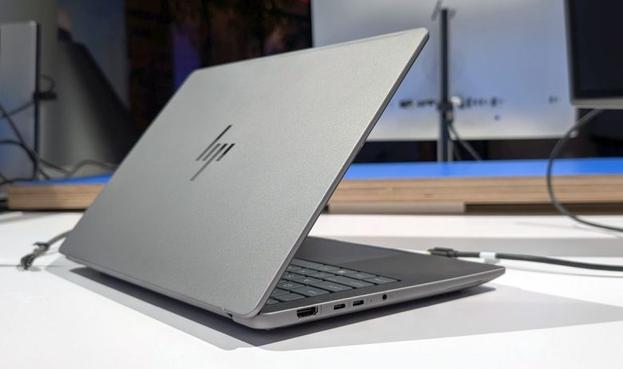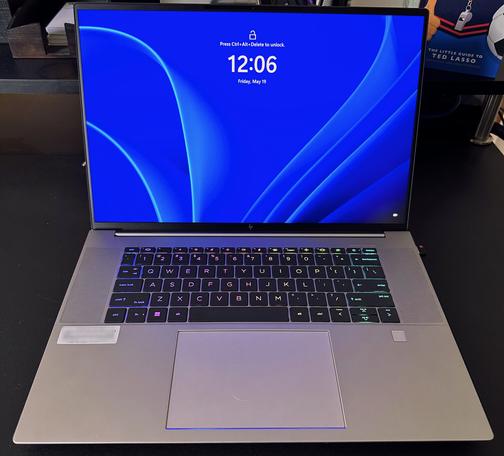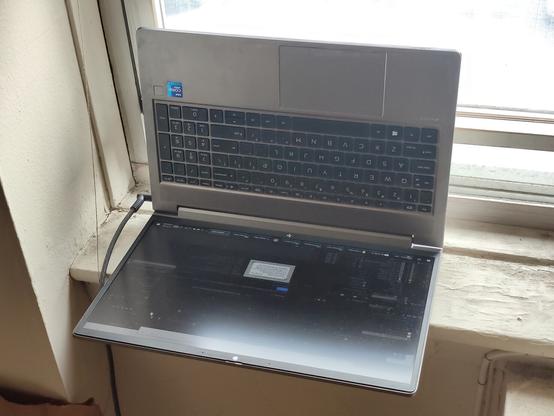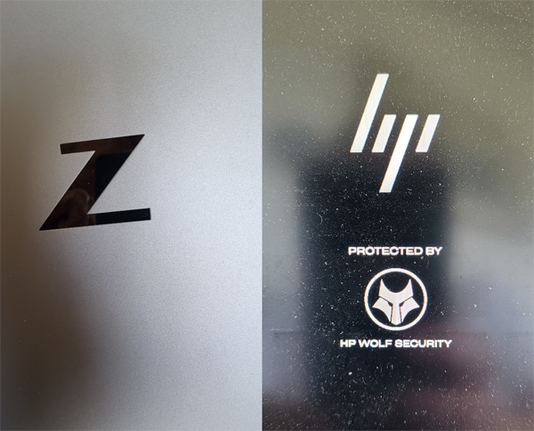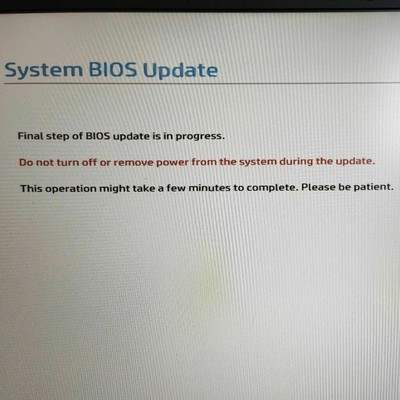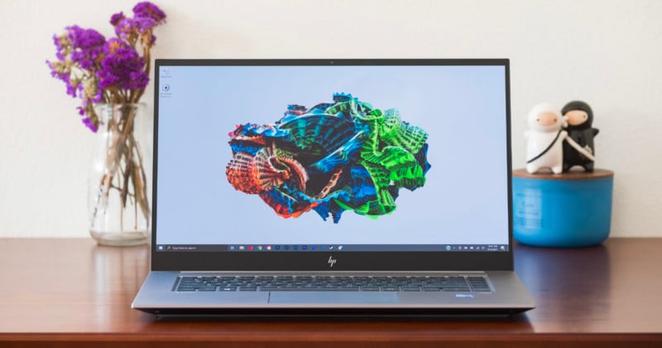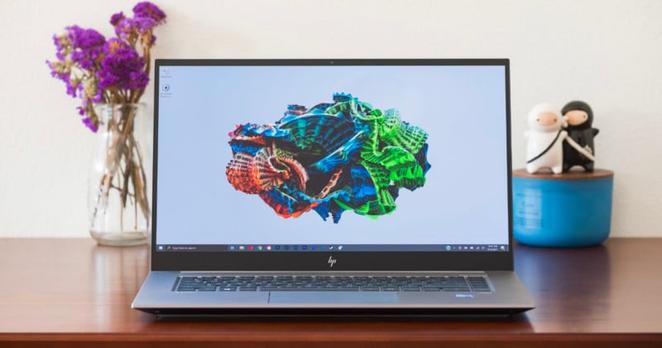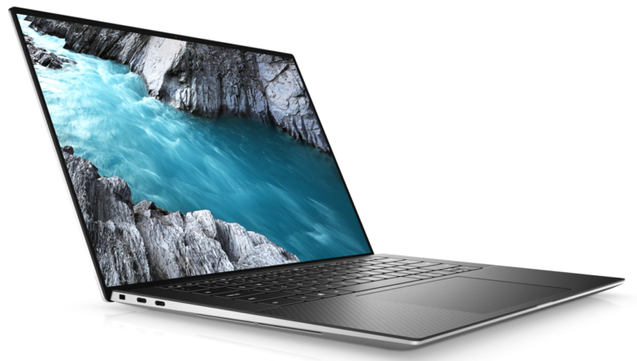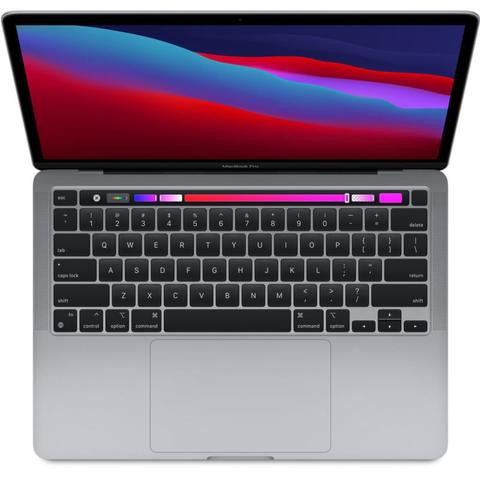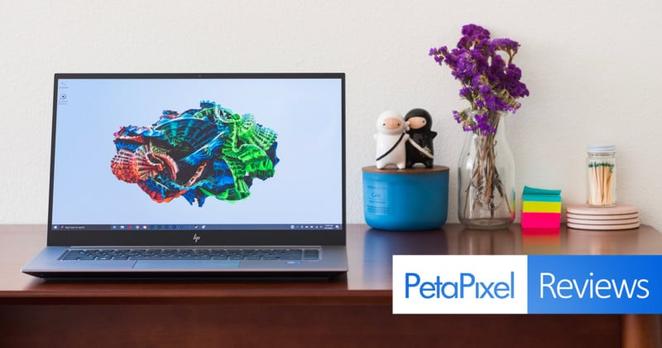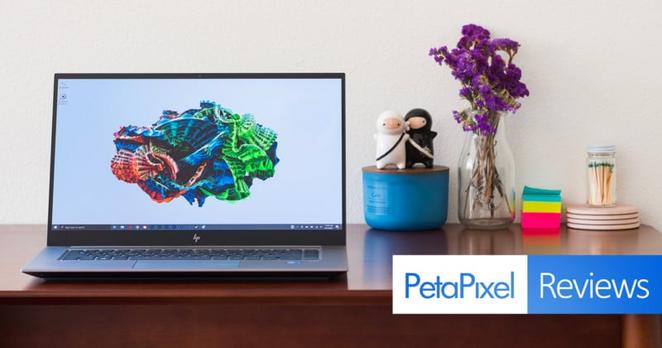Nochnal die betreffende Maschine in Händen für #WLAN-Upgrade. Das #zbook #17G2 funkt jetzt mit #ax200 fleissig und stabil im #Wifi6-Standard.
#Zbook
Today I will be receiving a laptop of unknown #Linux compatibility. Given that I am hoping to run Linux on it, this is potentially a problem.
Has anyone published a checklist of common hardware issues on Linux so I can do my own compatibility evaluation before the return window closes? I've checked several online databases, and haven't been able to find anything.
HP ZBook Ultra 14 G1a mobile workstation with AMD Strix Halo packs up to 16 CPU cores and 40 GPU compute units into a laptop
The HP ZBook line of mobile workstations are high-performance laptop computers that typically feature discrete graphics tuned for professional use. But the new HP ZBook Ultra 14 G1a features integrated graphics that HP says are powerful enough to make a discrete GPU unnecessary.
That’s because AMD’s new Strix Halo processors come come with up to an AMD Radeon 8060S integrated GPU with 40 […]
#ces2025 #hp #hpZbookUltraG1a #mobileWorkstation #strixHalo #zbook
HP تعلن عن جهاز ZBook Power 16 G11 جديد بمعالجات إنتل أو AMD
@leniwcowaty I'm neither a gamer nor a developer, but FreeBSD has been my daily driver for years.
SSH and the like: no problem.
HP ZBook 17 G2 with multiple HD displays on DisplayPort, NVIDIA graphics (Intel graphics usable, but intentionally disabled).
Previously with an HP EliteBook 8570p, AMD graphics.
@stdevel Cuz what @frameworkcomputer hampers is the fact that unlike even the most customized #BuildToOrder #ThinkPad, #zBook or #Latitude they can't #overnight business customers like a pallet of those on short notice.
Cuz that's what some of my [former] employers basically do...
They don't have time to wait like 6+ months for a laptop and thus won't buy it.
Du bist auf der Suche nach einem neuen #notebook und dir brennen grad 4 Kilo-Euro ein Loch in die Tasche? Wie wäre es mit einem #zbook wie dem hier:
https://www.nerd-o-mania.de/wordpress/2023/06/14/hp-zbook-fury-g9-test/
My new work laptop; an #HP #ZBook Studio G9
This is probably the best Windows based work laptop I've ever used.
- 16 inch 16:10 screen 500nits
- Large and surpirsingly smooth touchpad
- Nice keyboard to type on (and RGB as well)
- Decent speakers
- Relatively light weight and thin
It's still got an Intel chip in it, so of course the fan comes on every 10 minutes and the battery life is shit (probably 6 hours at most, but it’s on a dock 95% of the time).
While not a MacBook Pro, I give it high marks.
HP ZBook Power G9 review: Pro-level performance for intensive workflows
Our HP ZBook Power G9 review looks at one of the company's latest laptops that offers "pro-level performance for high-performance workflows."
#HP #ZBook #reviews #technews
https://techaeris.com/2023/03/17/hp-zbook-power-g9-review-pro-level-performance-intensive-workflows/
A good cold winter breeze helps the high power Intel H series processors work harder. :) #AfterEffects #Rendering #Zbook
Ich hab' mir im Herbst eine Workstation gegönnt, ein HP ZBook.
HP zeigt sich solidarisch mit der Ukraine. Wurde früher beim Hochfahren immer ein Z angezeigt (wie es noch außen drauf ist), wird nach dem letzten Update nur noch ein symbolisiertes hp gezeigt :)
Also EIGENTLICH wollte ich ja arbeiten…. #zbook
https://www.instagram.com/p/CdaKT8XqSe2/?igshid=NGJjMDIxMWI=
The Best Laptops for Photographers and Photo Editing in 2021
Seasoned photographers know that the search for the right laptop comes down to far more than a list of individually impressive specs. The perfect laptop for photo editing will not always be the one with the most bells and whistles, because perfection here is about so much more: usability, ease, intuition -- all the things that combine to create not just powerful imagery, but a powerful workflow as well.
With this total experience in mind, we have created a list of the best laptops for photo editing in 2021.
What We’re Looking For:
A photographer has many competing needs when selecting a laptop, so we have attempted to cover the most common areas for this list. We have considered price, functionality, performance, and durability to come to the following selections.
- Best PC Laptop for Photographers: Dell XPS 15 (9510)
- Best Apple Laptop for Photographers: MacBook Pro M1 (13.3”)
- Best Budget Laptop for Photographers: Asus VivoBook S15 S533
- Best Detachable 2-in-1 Laptop for Photographers: Microsoft Surface Pro 8
- Best Overall Workstation-Class Laptop for Photographers: HP ZBook Studio G8
- Best Value Workstation-Class Laptop for Photographers: Gigabyte Aero 17
Best PC Laptop for Photographers: Dell XPS 15 (9510)
CPU: Intel Core i7-11800H (11th Gen)
CPU: Intel Core i7-11800H (11th Gen)
GPU: NVIDIA GeForce RTX 3050 4GB GDDR6
RAM: 32GB DDR4
Storage: 512GB M.2 PCle NVMe SSD
Display: 15.6-inch, 3.5K OLED (3456×2160)
Size: 13.57 x 9.06 x 0.71-inch
Weight: 3.99lb
Price: Starting at $2,008.99
The key to any pick for "Best PC" on a list like this is not that it does a few things flawlessly or that it's loaded to the brim with features that are frankly excessive for 99% of photographers, but that it does everything "well." No laptop on this list fits that bill better than Dell's XPS 15 (9510): it just flat-out works.
No matter your need, skill, or financial situation, there is a configuration of the XPS 15 that is going to make you happy, and, most importantly, get the job done. The massive configuration and options that are available are a big part of what makes this our top pick. Every spec is user-selectable without changing the entire system. For example, if you don't care about the 3.5K OLED screen, you can downgrade to the 15.6-inch FHD+ InfinityEdge and knock about $200 off, for example. That said, we think that an extra $200 is more than worth the extra expense given how much of an improvement you get.
We have picked what we view as the optimal combination for processing power, storage, screen quality, and price and it will run you around $2,000. Its 15.6-inch 3.5K (3456×2160) Anti-Glare Screen is incredibly impressive, with 400-nits brightness and razor-thin Infinity Edge bezels on all four sides. In terms of processing power, you will get the 11th Generation Intel Core i7, a whopping 32GB of RAM, and a 512GB SSD, which is plenty suitable for most -- particularly since many photographers work off external storage.
Design across all configurations is sleek and comfortable, with the already-pleasant keycaps and touchpad getting a size increase over prior models. In keeping with the "Do everything pretty well" vibe of an all-arounder, port selection is mostly fine, offering three USB-C ports for charging and connecting to peripherals. Two of these are Thunderbolt 4, which is extremely welcome and something that not many PCs boast. There's also a full-sized SD card reader.
For those who want more spring in their step, you can increase your investment by moving to the Core i9 CPU, double your RAM to 64GB, and enhance your storage capacity all the way up to 8TB, and even boost your graphics to NVIDIA's GeForce RTX 3050 Ti. You also have the option to upgrade to the UHD+ 3740×2400 500-nit brightness screen. All of these upgrades are overkill for almost all photographers, but those whose work entails a hybrid of both photo and video may find the increased CPU, RAM, storage, and graphics power to be well worth the extra cash.
Conversely, the base level model is available starting at $1,273.99 -- if you're willing to drop to a Core i5 CPU, 8GB of RAM, a 256GB SSD, integrated Intel UHD graphics, and a basic FHD+ (1920×1200) display. But, as mentioned, you can adjust many of these specs to suit your needs (and budget). And perhaps best of all, both the RAM and SSD are user-upgradeable (nothing soldered here), making the jump from the base model to 16GB or even 32GB of RAM fairly easy and affordable after purchase. The integrated graphics of the base model are a demerit, but casual photographers will have no complaints as most photo editing applications rely largely on CPU processing.
No matter which configuration you choose for the XPS 15, you are going to find yourself steadily working without fuss, without issue, and with a good bit of enjoyment. The only downside to this machine is that it is so popular you might have a little more trouble locating one in stock. If all else fails, they are always available directly from Dell, and the website offers a price-match guarantee.
If you're not a fan of Dell, a solid alternative option would be the Razer Blade 14 QHD thanks to its excellent build quality, AMD Ryzen 9 5900HX CPU, NVIDIA RTX 3070 GPU, large 1TB SSD, and impressive port selection. In our review, we noted it was made for gamers, but is great for creators. The Razer Blade 14 was made for gamers, but photographers have no choice but to love it, too. Razer makes higher-end options (noted further down), but the Blade 14 gives photographers pretty much all they need, and then some.
Best Apple Laptop for Phototographers: MacBook Pro M1 (13.3”)
CPU: M1 8-Core (4 high-performance and 4 high-efficiency cores)
GPU: M1 8-Core Integrated
RAM: 8GB Embedded DRAM
Storage: 256GB Integrated PCle SSD
Display: 13.3-inch, Retina Display (2560 x 1600)
Size: 11.97 x 8.36 x 0.61-inch
Weight: 3 pounds
Price: Starting at $1,199
The 2019 MacBook Pro 16-inch was, and remains, one of the most impressive laptops in the industry. So why focus on the MacBook Pro with M1? Predictably, it all goes back to that M1 chip, which we described as "a revolution" in our review of the M1 MacBook Pro. It may seem like an exaggeration if you have not used this device, but the M1 makes for a legitimately transformational experience. This thing moves at the speed of your whims.
It is possible to bog the M1 down, but you have to sweat to do it by opening an insane number of windows and programs before the hint of a stutter appears. When it comes to Photoshop, this machine flat-out smokes much of the competition, especially those in the same price tier. Factor in the battery life and the M1 starts to feel unbeatable.
From a design perspective, it is exactly what you would expect from a MacBook, complete with all the benefits and drawbacks one expects. The 13-inch screen, while boasting that beautiful Retina display (with 100% DCI-P3 coverage), still suffers from the annoyingly thick bezels. That said, it is far brighter than you expect, surpassing numerous competitors (even popular members of the MacBook line), and delivers quality color information. The Magic Keyboard may not be suited to everyone, but those who love it will really, really love it. Overall weight is still an issue, but manageable.
The maximum 16GB of RAM is one sacrifice here, though it should be noted that the M1’s RAM goes much further than those with Intel or AMD-based processors -- the 16GB model will serve those who edit very high-resolution photos and/or video, while the 8GB model is a great option for the everyday photographer on a budget. The other niggle is its mere two Thunderbolt 4 ports, but this is easily expanded with excellent products like the OWC Thunderbolt 4 Hub or Thunderbolt 4 Dock.
It is also important to mention here that the new 14-inch and 16-inch MacBook Pros that Apple just announced, which feature your option of the M1 Pro and M1 Max chips, appear to be a thunderous step forward not only in the MacBook line itself but computing in general. This could inform your decision to hold off a purchase in two ways -- either preorder one of the newer, more powerful models or wait for the price to drop on the 13.3-inch M1 version. We are confident saying you will not be disappointed either way.
The most affordable model -- the MacBook Pro 14″ with M1 Pro chip -- starts at $1,999. You gain a minimum of 16GB of RAM and 512GB SSD (versus 8GB RAM and 256GB SSD for the M1), the 10-bit True Tone 100% DCI-P3 Liquid Retina XDR with HDR mode and ProMotion (up to 120hz), and a sustained 1,000 nit brightness (1,600 nit peak), three Thunderbolt 4 ports (versus two), the return of Magsafe power, an SDXC card slot and HDMI port, and a 3.5mm audio jack. Oh, and of course you get the new M1 Pro chip, with an 8-core CPU (six performance, two high-efficiency cores), 14-core GPU, and a 16-core Neural Engine. So, yeah, I'd say it's worth the extra $800.
One note: supply is currently an issue across the entire tech landscape, so getting your hands on the newest Macbook Pros might be difficult.
If you need a computer immediately, the best alternative is the slightly more affordable MacBook Air 13.3-inch M1 that comes in at $949. It loses very little when compared to its bigger brother: seven GPU cores versus eight, the screen brightness drops from 500 nits to 400, and you lose the touch bar (which may actually be a positive for many).
Best Budget Laptop for Photographers: Asus Vivobook S15 S533
CPU: GPU: Intel Iris Xe
RAM: 8GB DDR4
Storage: 512GB PCle SSD
Display: 15.6-inch, Full HD (1920 x 1080)
Size: 14.2 x 9.2 x 0.63-inch
Weight: 3.97lb
Price: Starting at $729.99
The Vivobook S15 S533 is not the most powerful computer on this list. It does not have the most beautiful display. It does not have the graphics or CPU power of the top of the line. What it does have, however, is a price that will make you feel like you have gotten away with something. For just over $700, this is the most complete laptop a photographer counting their pennies will find.
Make no mistake, despite its budget-level price you will feel no shame pulling your Vivobook S15 out to get to work in any location. The look and feel are strictly professional, thanks in no small part to the large 15.6-inch full HD (1080p) display. The build is slim too, which means it will easily into your bag. The weight is solid, but not overbearing. The processing power here won’t blow your hair back, but the Intel Core i5 is no slouch, and for an extra $270, you can upgrade to the VivoBook S15 S532EQ a Core i7-1165G7, 16GB RAM, 1TB SSD, and a dedicated NVIDIA MX350 graphics card.
For the average user, the 512GB SSD is adequate. Anyone beyond that level will already be investing in additional external storage, so the base model Vivobook S15 poses no significant downside for average, budget-conscious users. Again, did we mention the price? The VivoBook S15 punches above well above its price class and is a pleasant surprise and the best option for those on a budget. Oh, and it comes in your choice of black, gray, red, green, and white.
As an alternative, the Lenovo 15.6-inch IdeaPad 5 is a solid option. This machine exists at the perfect sweet spot between processing, affordability, and reliability. With an 11th Gen Intel Core processor and a generous 16GB of DDR4 RAM booting and running your photo editing software will be no problem. The screen is fine at full HD, but the IdeaPad also provides you with an unexpected amount of storage (512GB) for the price. It is definitely worth considering.
Best Detachable 2-In-1 Laptop for Photographers: Microsoft Surface Pro 8
CPU: Intel Core i5-1135G7 Quad-Core
GPU: Intel Iris Xe
RAM: 8GB LPDDR4x
Storage: 128GB SSD
Display: 13-inch, PixelSense Flow 10-Point Touchscreen (2880 x 1920)
Size: 11.3 x 8.2 x 0.37-inch
Weight: 1.96lb
Price: Starting at $1,099.99
Every company makes them at this point, but Microsoft remains king of the hill when it comes to tablet-style "2-in-1" PC. The company's Surface line remains a juggernaut in an ever-expanding market, and the Surface Pro 8 is the latest example of that dominance. Combining the performance increases of the 7 with the modern design of the X, then improving on both, the Surface Pro 8 is the best the line has ever offered.
One look at the screen and the leap forward becomes clear -- literally. Gone are the chunkier bezels of the past, making room for a larger 13-inch PixelSense display. Size isn't the only upgrade; resolution has been boosted to a welcome 2880 x 1920. If you are in the market for a detachable 2-in-1, you are already aware your screen will not compete directly with a dedicated laptop, but this sharper display goes a long way toward making you forget. Add in the surprising new 120Hz refresh rate and PixelSense's stellar track record with color and brightness, and you have one gorgeous display. Your eyes are not alone in their excitement, though. Your fingers get their due as well. That increased refresh rate means every touch practically glides across the display at the speed of thought. There is no usage for the touchscreen not improved by this upgrade, and you will notice.
What you may not notice, however, is that the weight and thickness of the Surface Pro 8 have expanded with the revamp -- and this is a good thing. The Surface Pro has always been compact and light, an obvious positive in the 2-in-1 space. This provided Microsoft the space to bulk up for the right reasons without becoming cumbersome. So what does the extra size mean for you? Increased thermal space, and thus increased performance. Using the Puget Systems' PugetBench for the Photoshop test, Surface Pro 8 shows itself to be near the top of the pack amongst peers for the tasks most crucial for a photographer.
The trouble, of course, is that to really feel the upgrade the Surface Pro 8 represents, one needs to commit to the $1599 model featuring the 11th Gen Intel Core i7-1185G7. At this point, cost-benefit has to come into play, especially considering Microsoft refuses to include a keyboard out of the box. The good news is, both the keyboard cover and Slim Pen are wonderful to use. The bad news is, you are looking at nearly $300 more for the pleasure (or the necessity, as it were). Of course, if you are in the market for a Surface, you have likely made peace with these realities already, and the heading here is "Best Detachable 2-in-1", not "Best Budget 2-in-1." The Surface Pro 8 is a truly beautiful device, and the best on offer from the leader in the field.
It probably doesn't come as much of a surprise that the best option outside of the newest Surface Pro is… Microsoft's next-to-newest" the Microsoft Surface Pro 7. With the introduction of the 8, the Pro 7 is due for a discount.
Best Overall Workstation-Class Laptop for Photographers: HP ZBook Studio G8
CPU: Intel Core i7-11800H 8-Core
GPU: NVIDIA Quadro T1200 4GB GDDR6 VRAM
RAM: 16GB DDR4
Storage: 512 GB PCle M.2 SSD
Display: 15.6-inch Anti-Glare IPS (1920 x 1080)
Size: 13.94 x 9.24 x 0.7-inch
Weight: 3.95lb
Price: Starting at $2,349
As we noted in our recent review, the ZBook line has always vied for attention in the mobile workstation segment but has continually gone under the radar. With the ZBook Studio G8, we think that should change. In some ways, it should come as no surprise that a line seemingly arguing with itself over whether it wants to pump out business laptops or gaming rigs would eventually split the difference and stumble on a machine ideal for photo editing.
The price may raise eyebrows, but the ZBook Studio G8 positions itself in direct competition with premium machines available from the likes of Razer. Once expectations adjust, you will find the Studio G8 a more than worthy option in that space. The G8 is an all-in-one machine meant to facilitate any work, play, or viewing experience you throw at it.
The construction alone confirms the dual focus on luxury and strength. The magnesium and aluminum alloy build is as rugged as it is refined. The design is sharp, sleek, but its durability is never in question. We touch on how extensive the testing is on these machines in our review but suffice to say: you can be confident the G8 can handle whatever you throw at it. Literally.
The keyboard action is pleasing and precise, and the glass-topped trackpad, while smaller than you may expect, is quite responsive and provides a very satisfying, tactile click. The 15.6-inch 4K OLED touchscreen is brilliant and one of the most satisfying screens on this list. Playing back into that marriage of polish and durability, it is also covered in Gorilla Glass 6.
Under the hood, there is quite a lot to cheer for. The marriage of the 8-core Intel Core i9-11950H, 16GB of RAM, and the Nvidia Quadro T1200 4GB GDDR6 graphics card makes this a fantastic fit for any photographer. The 512GB M.2 SSD is plenty for those who work off external SSDs or hard drives as well.
But the ZBook Studio G8 can take the leap from being a very good photo editing machine to an absolute monster for photo, video, and graphics editing -- or pretty much anything else you can throw at it. Maxed out with an Intel Core i9-11950H processor, 32GB of RAM, a 1TB M.2 SSD, an NVIDIA GeForce RTX 3080, and a 120hz 3840 x 2160 DreamColor IPS Display, it can handle just about anything you throw at it -- all while remaining as sleek and user-friendly as any mid-sized laptop should be. It will cost you an eye-watering $5,198.95, however.
The one deficit -- and it seems a rather noticeable one given the goals of the device -- is the dearth of available ports. The two Thunderbolt 4 USB4 Type-C are certainly welcome, but they are accompanied only by a single USB-A 3.2 Gen 1 port, one 3.5 mm headphone/mic combo audio jack, one HDMI 2.1, and one Mini DisplayPort. It is a survivable amount, but for the price HP is asking, we would hope and expect a bit more. Predictably, for a desk-rider like this, battery life is only middling -- Five hours is simply frustrating at this level.
Still, this is one of the more beautiful, more powerful laptops on the market, and, despite its price, will likely be under-considered by those who could most appreciate it. Reliability and performance are the keys to high volume, consistent work against a deadline. On this front, the Studio G8 is a marvel. In the end, it may be most exciting for what it portends. If this is a signal to the direction the ZBook line is moving, the future is incredibly exciting.
Alternatively, we think the Razer Blade 15 Advanced is a solid pick. While not necessarily a "workstation" like the Studio G8 is, we reviewed the Razer Blade 15 Advanced and found it to be an excellent, powerful option. Slimmer and sleeker than you would expect for the power it contains, it is one of the most usable, enjoyable laptops on the market. Its half-inch thick frame holds an 11th-Gen Intel Core i7 with 32 GB of RAM and an NVIDIA RTX 3080 graphics card that will rip through whatever creative multitasking you throw its way.
Best Value Workstation-Class Laptop for Photographers: Gigabyte Aero 17 HDR XD
CPU: Intel Core i7-11800H
GPU: NVIDIA GeForce RTX 3070 8GB GDDR6
RAM: 16GB DDR4
Storage: 1TB SSD
Display: 17.3-inch 4K UHD HDR OLED (3840 x 2160)
Size: 15.6 x 10.6 x 0.85-inch
Weight: 5.5lb
Price: Starting at $2,149
The Gigabyte Aero 17 successfully goes beyond “best laptop” into “best workstation” territory in a way few rivals can claim. The raw power of the Aero 17 is impressive, even more so once one considers its very reasonable price.
The first thing that catches my attention about the Aero is its GPU. One of the first laptops released in 2021, it boasts the latest in NVIDIA GeForce RTX 30-series GPUs. Whether you opt for the 8GB GDD6 3070 or 16GB GDDR6 3080, the graphics processing force of this machine places it ahead of the pack. These may not be the desktop versions of these much-hyped (and impossible to find for anywhere near a reasonable price) cards, but they will still knock your socks off.
Whether it's Adobe Premiere or Da Vinci Resolve or something else, the Aero is built to easily handle 8K footage, ray tracing, virtual reality, 3D modeling and animation, and visual effects work. NVIDIA DLSS utilizes the Tensor Cores for a boost in AI rendering, while the AI-powered Dynamic Boost 2.0 manages power on a per-frame basis, allowing the computer's AI to constantly optimize the CPU, GPU, and GPU memory for the maximum performance boost. These features are entirely overkill for those who solely engage in photo work, but I imagine 3D artists and video editors read these specs and immediately break into a sweat, nodding and cheering. This makes it the ultimate choice for those of us who edit photos as well as video, or any other graphics-intensive work.
The build quality here is exceptional. While certainly not a slim device, it is far less bulky than one would anticipate given its robust performance. The Gigabyte Fusion RGB Per-Key Backlit Keyboard may aggravate some who value cleaner and sleeker aesthetics, but this is part and parcel with a rig that screams “game on.” Unlike some other laptops on the list, you are practically spoiled with ports on the Aero 17, which features three USB 3.2 Gen1 Type-A ports, one Thunderbolt 4, an HDMI 2.1 port (which supports 4K up to 120Hz), a Mini DisplayPort 1.4, a UHS-II SD Card Reader, as well as headphone out and mic in ports. As far as sound, the Aero sports DTS: X Ultra speakers which enable virtual 7.1 surround sound, and Two-Way AI Noise Cancelation for class-leading incoming and outgoing audio.
If there is a disappointment to be found with the Aero, it comes in battery life. This tracks, given how much processing power is packed into this thing, but for those on the go, planning out a charging strategy will be a must. It also tends to run somewhat hot and a little noisier than some may prefer; just tell yourself these are the prices you pay for power. To its benefit, however, the Aero sports Microsoft Azure AI, which Gigabyte touts as "the world's first AI laptop." As you use the laptop and various applications, the Microsoft Azure Machine Learning platform gathers data and then optimizes the CPU and GPU usage for both processing speed and to limit wattage consumption, thus enhancing battery life.
All this, and we failed to touch on the 17.3-inch 4K UHD OLED Anti-glare screen with 100% Adobe RGB coverage all surrounded by "the world's first" ultra-thin 3mm three-sided bezel. Oh, and every individual unit is factory X-Rite calibrated with a Pantone Validated certification. Want accurate colors right out of the box? Yes, I think I do, thank you.
Upgrade to the Aero 17 HDR YD and you bump the specs up to a Core i9-11980HK, 32GB RAM, a GeForce RTX 3080 GPU with 16GB GDDR6, and a 512GB PCIe Gen4 SSD as well as a second 1TB Gen3 hard drive for additional storage.
If you want a suggestion beyond Gigabyte, the Lenovo ThinkPad P15 Gen 1 is a solid alternative. It is blazing fast, has a phenomenal screen, and sports a generous port selection which makes the Lenovo ThinkPad P15 one of the best mobile workstations for creatives out there. With Gen 2 just around the corner, Gen 1 is already seeing massive discounts online. Not just a great value selection, this one is a steal.
#equipment #guides #products #technology #apple #asus #dell #dellxps #gigabye #gigabyteaero17 #hp #laptops #lenovo #macbook #macbookpro #microsoft #razer #razerblade14 #razerblade15 #surfacepro8 #thinkpad #vivobook #zbook
HP ZBook Studio G8 Review: Rock Solid Performance, Painful Price Tag
HP's ZBook lineup -- which encompasses the lightweight ZBook Firefly, the affordable ZBook Power, the powerful ZBook Fury, and the best-of-all-worlds ZBook Studio brands -- doesn't attract a lot of attention. As a mobile workstation-class device, the ZBook Studio is not as flashy as most gaming laptops or as affordable as most "creator" laptops, but in many ways, it's better than both.
In the parlance of the tech nerd, the HP ZBook Studio G8 is a "mobile workstation." On the hardware side, that typically means that you're getting a Xeon processor, error-correcting (ECC) RAM, and an A-series or Quadro graphics card, paired with some sort of reliability testing (MIL-SPEC or MIL-STD), software certifications from major developers like Adobe, and an extended warranty. All of this usually comes attached to a price so high you'll get altitude sickness if you stare at it for too long.
We don't normally review mobile workstations on PetaPixel because the price increase associated with things like ECC memory and an enterprise GPU doesn't translate into a measurable performance gain for photo and video editing, but HP did something interesting with the ZBook Studio G8: the company sort of split the difference.
The Studio G8 doesn't use ECC memory or an Intel Xeon CPU, and it can be configured with a normal GeForce RTX 30-series GPU, but it still comes with all the other workstation perks. In other words: it offers the same performance as a high-end gaming laptop and the same sleek, professional design as a high-end consumer laptop, with better build quality, guaranteed reliability, and a longer warranty than either of the other categories. As a result, it comes in a little cheaper than similar options from, say, the Dell Precision lineup.
That's not to say it's cheap. The model HP sent us for review still costs an eye-watering $4,400:
Even if you downgrade some of the components, you're still going to spend a lot of money. We actually asked the folks at HP to send us "Good, Better, Best" configuration options that they would recommend, and the most affordable of the bunch will still run you almost $2,800:
But that's not to say that the price isn't justified, or at least justifiable. From design to usability to raw performance, this laptop is fantastic. It's just important to set expectations from the get-go: We're not talking about a budget laptop today. We're not even talking about a semi-affordable laptop. We're talking about a mobile workstation that charges a substantial premium in exchange for professional-grade reliability and guaranteed performance.
If paying a $1,000 premium for MIL-STD reliability testing, software certifications, and an extended warranty sounds crazy to you, then a mobile workstation is the wrong choice and there's no reason to read on. However, if that sounds like a reasonable investment and you like the fact that HP isn't forcing you to throw additional money away on certain enterprise-grade specs you don't want or need, then read on, because the HP ZBook Studio G8 turns out to be an excellent laptop for creative professionals.
Design and Build
There are only a few laptops that can compete with the likes of Apple and Razer when it comes to chassis design, but the HP ZBook Studio G8 is right up there with the best. The magnesium-and-aluminum alloy chassis is as rigid as a tank, extremely thin, and carved into a sharp design language that I loved from the moment I set eyes on this laptop.
Build quality really is top-notch. HP's workstation-grade "Z" devices all undergo MIL-STD-810 testing, ensuring a level of reliability that surpasses anything you can expect from a standard consumer laptop. The MIL-STD-810 standard includes a suite of tests that check for resistance against vibration, dust, sand, humidity, altitude, drops, temperature shock, and even a "Freeze/Thaw" test.
Adding to the laptop's reliability quotient is a three-year warranty direct from the manufacturer, a perk that usually costs extra (if it's available at all) when you buy a consumer laptop.
Crack the ZBook Studio G8 open, and you'll reveal an excellent keyboard that combines a satisfying click with a good amount of travel, zero mush, and per-key RGB lighting that gives the laptop just a little bit of gaming flare. The lighting is controlled by HP's "OMEN" dashboard, and it's a fun touch on an otherwise very professional-looking laptop.
This is accompanied by a slick, glass-topped trackpad that provides a precise and extremely well-optimized experience that can compete with the best-of-the-best. Because the speaker grill is positioned above the keyboard, the trackpad isn't quite as big as the ones you'll find on the latest Apple and Dell computers, but it was plenty big enough for me.
Port selection is solid, with only a little room for improvement. On the left side of the machine is an audio-combo jack, a USB Type-A port, and a Kensington lock; on the right side, you'll find a sealable SD card slot, a Mini DisplayPort 1.4 port that's connected directly to the GPU, and two Thunderbolt 4 ports that can carry 40Gbps of data, power, and a display signal.
My gripes are minimal. Mainly, I was annoyed that the Thunderbolt 4 ports are connected directly to the iGPU with no way to re-route that signal in the BIOS (this is according to HP). As a result, anyone using a high-end 4K external display will want to use the Mini DisplayPort for true 10-bit color or high refresh-rate gaming.
For that reason alone, I really wish that HP had included an HDMI 2.1 port in this configuration instead of the MiniDP port. None of the monitors I've ever reviewed came with a MiniDP to DP 1.4 cable in the box, wihch forces me to buy a new cable in order to get full performance out of the ASUS ProArt PA32UCG I was using when I reviewed this laptop and eliminates the option of using this as a "single-cable" setup with Thunderbolt providing data, display, and power.
Fortunately, the included display is more than good enough to do professional creative work. The model we're testing includes a touch-enabled 4K AMOLED screen that was able to hit well over 100% sRGB, 99.9% DCI-P3, and 91.6% Adobe RGB with an excellent Delta E of less than 2 and a maximum brightness of ~400 nits.
If OLED isn't your thing, the ZBook Studio G8 is also available with a 4K 120Hz "HP DreamColor" LCD display with an advertised peak brightness of 600 nits and 100% coverage of DCI-P3, or an even more affordable Full HD model that promises 100% coverage of sRGB.
It's nice to see a manufacturer offer both a 4K LCD and a 4K OLED option with identical gamut coverage, as well as a more affordable (but still acceptable) Full HD option. If you're sold on the peace of mind of a mobile workstation but hate the price tag it carries, the lower-end screen option opens the door to get creative with your configuration, especially if you plan to use an external display much of the time.
As for our 4K OLED unit, you can see the results from our DisplayCAL tests below:
The HP ZBook G8 covers 99.9% of DCI-P3 (left) and well over 100% of sRGB (right).
If there's a big downside to the high-res screen on our model it's probably battery performance, which is decidedly middle of the road.
As with other high-performance notebooks, the ZBook Studio's 83WHr battery can't support the computer's full 110W TDP (30W to the CPU, 80W to the GPU), and when you're pushing the computer to its battery-powered performance limit, you can expect no more than about two hours of intense photo editing. In a more reasonable, battery saver or balanced mode, I was able to get about six hours of use for writing, occasional content consumption, and light photo editing, but don't expect this laptop to compete with something that's powered by AMD.
Overall, I found a lot to love and very little to complain about when it comes to the design and build quality of the ZBook Studio G8. It's an excellent laptop that felt like a little piece of military equipment with just enough design flare. The excellent keyboard and trackpad, the professional-grade display, and the dual Thunderbolt 4 ports all make it a solid contender for serious creative work.
Photo Editing Performance
Given the extremely thin design, I was skeptical that the HP would be able to squeeze every ounce of performance out of its Core i9-11950H and NVIDIA RTX 3070. I was only kind of right. In most of our benchmarks, the ZBook couldn't quite out-perform the latest Razer Blade 15 Advanced, which technically uses an ever-so-slightly slower Core i9-11900H, but the thinner ZBook Studio was still able to churn out top-shelf performance numbers.
Whether you're running Photoshop, Lightroom, or Capture One, you can expect the Studio G8 to fly through most photo and video editing tasks with ease, all while staying remarkably quiet compared to some of the gaming laptops I've tested.
For our comparisons today, we're showing the results from the HP side-by-side with the same tests run on an M1 iMac, an AMD-powered ASUS Zephyrus G14, and the aforementioned Blade 15 Advanced. Full specs below:
Lightroom Classic
In our standard import and export tests, the ZBook clocked in a tiny bit slower than the Razer Blade, but faster than our other test machines. As a reminder, these tests consist of importing 110 61-megapixel Sony a7R IV and 150 100-megapixel PhaseOne XF RAW files, generating 1:1 (Lightroom Classic) or 2560px (Capture One Pro) previews, applying a custom-made preset with heavy global edits, and then exporting those same files as 100% JPEGs and 16-bit TIFFs.
You can see the results for Lightroom Classic below:
Capture One Pro
The story is even better in Capture One, where the computer's RTX 3070 finally gets to flex its muscle.
As we've mentioned in several of our past reviews, Lightroom does not use any sort of GPU acceleration during import or export, relying exclusively on the performance of your CPU and RAM to generate the numbers you see above. However, Capture One does take advantage of the GPU, so when it comes time to export the heavily-edited Sony a7R IV and Phase One XF variants in C1, the HP ZBook Studio G8 was able to close the gap with the Blade and trade blows at the top of the pack.
The results are essentially a wash between the three PCs, all of which benefit from NVIDIA RTX 30 series GPUs, with the M1 iMac falling way behind:
Photoshop
Finally, we ran our usual Photoshop test: Puget Systems' industry-standard PugetBench benchmark.
PugetBench assigns an Overall and four Category scores after timing a wide variety of tasks including basic stuff like loading, saving, and resizing a large .psd, GPU-accelerated filters like Smart Sharpen and Field Blur, and heavily RAM-dependent tasks like Photo Merge. As we have in the past, we ran version 0.8 of this particular benchmark, because it was the last version to include a Photo Merge test.
As you can see, the powerful GPU, 32GB of 3200MHz RAM, and the NVIDIA RTX 3070 GPU come together to put up impressive numbers in every category tested:
Performance Takeaways
There's no questioning the HP ZBook Studio G8's performance chops. Is it the most powerful laptop money can buy? Definitely not. HP's own ZBook Fury lineup, the Alienware x17, and the Lenovo Legion 7i (to name a few) can all be configured with more powerful (and power-hungry) CPU/GPU combinations that would no-doubt outperform the ZBook Studio. However, it's awesome to see this kind of performance across the board from such a thin device.
This is seriously impressive photo editing performance packed inside of a chassis that's thinner than we previously thought possible for an Intel-based workstation.
Excellent Design, Great Performance, Painful Price Tag
If you can stomach the price, the HP ZBook Studio G8 is a phenomenal laptop for photo and video editors who want great performance paired with guaranteed reliability. That latter point really matters to working pros, who often opt for high-end gaming laptops with less-than-ideal build quality and lower-quality displays in order to achieve this kind of performance.
However, even when you understand the benefits, the Studio G8's price is really hard to swallow. The variant I tested here costs about $1,000 more than you would spend on an (already expensive) Razer Blade 15 Advanced with basically the same core specs, a more powerful GPU, faster PCIe Gen 4 storage, and a next-gen OLED display that covers 100% of both DCI-P3 and AdobeRGB.
You really have to value those un-sexy mobile workstation perks if you're going to justify that kind of price hike.
Pros
- Excellent performance
- Thin, light, rugged design
- Fantastic trackpad and keyboard
- Multiple color-accurate display options
- Solid port selection with two Thunderbolt 4 ports and an SD card slot
- MIL-STD-810 tested
- 3-year warranty included
Cons
- No HDMI port
- SSD is PCIe 3.0, not 4.0
- RAM is not upgradable
- Sky high price
I hate to spend so much time addressing a computer's price since a lot more goes into judging the real-world value of a computer than the cost of its components, so in most cases, I'll focus on performance and usability and leave the economic calculus to individual readers who have individual budgets and don't give an individual damn whether I think a laptop is "reasonably priced."
However, "mobile workstations" like the ZBook Studio G8 exist in a different economic reality, and it's important to understand the benefits and drawbacks of that reality before you either a) spend way too much on a laptop you don't need, or b) ignore features and benefits that could make the laptop worth every last penny.
For me, a well-built consumer laptop is reliable enough. I simply don't use my computers hard enough to justify the price jump and there are some really fantastic options out there. But if you're a professional photographer or video editor who needs a well-rounded, rock-solid machine that will go with you everywhere for the next three to five years, the HP ZBook Studio G8 is worth a very close look. It's cheaper than many of its direct competitors in the workstation-class, gives you a wider variety of configurations to choose from, and it churns out better performance than we expected from something so sleek.
Are There Alternatives?
Several major laptop makers have a workstation brand that offers similar benefits to the ZBook Studio. The most popular are probably Lenovo's ThinkPads and Dell's Precision lineup. As I mentioned earlier, these laptops usually swap NVIDIA's GeForce graphics for a mobile Quadro or A-series GPU, sometimes they use error-correcting "ECC" RAM, and often they include longer warranties, the aforementioned military-grade certifications, and displays that put an emphasis on color and/or battery life over speed and/or gaming performance.
For photographers, we'd recommend avoiding anything with ECC memory, an Intel Xeon processor, or an A-series/Quadro card, simply because these upgrades tend to increase the price significantly without adding much to real-world photo and even video editing performance. An 11th-gen Core i7 or Core i9 CPU, DDR4 RAM and a GeForce RTX 30 series GPU is just fine. Instead, if you're interested in a mobile workstation, focus more on features like a solid manufacturer warranty, standardized reliability testing, and a killer LCD or OLED display with close-to-100% coverage of either AdobeRGB or DCI-P3.
Many of HP's ZBook-branded laptops, Dell's Precision laptops, and several of Lenovo's ThinkPad models trade blows here in a variety of price brackets and configurations, depending on the kind of CPU, GPU, and display performance you need.
If you're not interested in a mobile workstation, you can find similar performance and solid build quality for a lot less money by purchasing a high-quality consumer or gaming laptop like the Dell XPS 15/17, the Razer Blade 15 Advanced and Razer Blade 17, or the ASUS Zephyrus G14/G15 (just to name a few). You'll get a lot more performance-bang-for-your-buck by going with a "consumer" or "creator" laptop vs a proper "mobile workstation," just be aware of what you're giving up.
Should You Buy It
Yes.
The caveats above apply, but other than a few minor gripes that I mention above, I cannot fault this laptop. For creatives, it's a workhorse. The ZBook Studio G8 delivered a lot more "umph" than I expected from such a thin and light chassis while staying relatively quiet, it looks and feels great, and it offers a good variety of configuration options that help you dial in a ratio of price-to-performance that works for you.
It's ultimately up to you to decide if the un-glamorous benefits of a mobile workstation are worth the inflated price tag. But if they are, then I have no qualms recommending this laptop.
#equipment #reviews #computerreview #g8 #hp #hpzbook #hpzbookstudio #hpzbookstudiog8 #laptop #laptopreview #photoediting #review #studiog8 #videoediting #zbook #zbookstudiog8
The New HP ZBook G8 Laptops Look Like Mobile Creative Powerhouses
HP has unveiled three new ZBook G8 range laptops, from a more affordable option to a powerful mobile workstation suitable for creative professionals, all customizable with 11th Gen Intel H-Series processors and 4K displays.
HP's previous ZBook laptop collection was announced only in late 2020 but in order to keep up with the range of mobile workstations that are released and packed with the latest 11th Gen Intel H-Series processors, HP has responded to the competition with its new ZBook G8 range, which consists of three laptops: HP ZBook Studio G8, HP ZBook Fury G8, and HP ZBook Power G8.
ZBook Power G8
As reported by Engadget, the new trio comes with 15.6-inch full HD or 4K display, while the Fury model also has a larger 17.3-inch option. All three models come with up to 2TB internal storage and offer users a choice of either Intel's Xeon or 11th Gen H-Series processors, which can be upgraded to the Core i9.
ZBook Fury G8
Overall, the whole G8 collection is designed to deliver powerful mobile workstations for design and video work as well as VR development. This is where the similarities end though, as each of the models is designed to suit different needs.
ZBook Studio G8
The HP ZBook Studio G8, aimed at professional creatives with demanding workflows and additional gaming interests, offers the largest choice of GPU options and allows the configuration of NVIDIA RTX A5000 or GeForce RTX 3080. The latter is touted by The Verge as the most powerful mobile GPU available, which brings Studio G8 at the forefront as a work and gaming hybrid consideration compared to the rest of the laptops in the collection, especially with the added RGB keyboard which offers numerous color customization options through OMEN Gaming Hub.
RGB keyboard on the ZBook Studio G8
Additionally, The Verge reports that Studio G8 has an HDMI 2.1 port, which allows users to configure the laptop to display 4K resolution at up to 120 frames per second on external monitors or TV screens that can handle such resolution.
The more customizable HP ZBook Fury G8 gives a choice of either 15.6-inch or 17.3-inch displays. With the choice of AMD Radeon Pro graphics, this model is aimed at visual creatives who are looking for a desktop performance packed in a portable and sleek design.
It also features 1,000 nits of brightness on the smaller 15.6-inch option on a full HD, which can be useful for high-quality photo editing, or 600 nits on the 4K display option. Fury G8 also offers the most memory -- up to 128GB 3200MHz -- compared to the Studio's 32GB and Power's 64GB.
In comparison to Studio and Fury models, the Power is named as the most affordable workstation out of the three options, although prices for the trio have not yet been revealed. The HP ZBook Power G8 is highlighted for its security features, such as ISV certifications, the HP Security Suite, and Tile device location, as well as its durability. This model still packs high performance and features NVIDIA RTX A2000 Laptop graphics and PCIe G4, but the company markets it as an ideal option for STEAM students more so than professional creatives.
Currently, the more affordable Power G8 is expected to become available in select countries in June 2021, while Studio G8 and Fury G8 will both follow in July 2021.
#equipment #news #beachphotography #computing #gaming #hp #hplaptop #mobileediting #newlaptops #zbook

